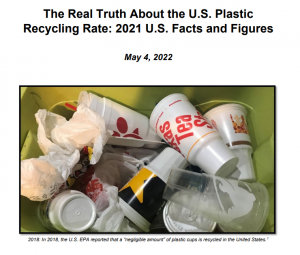Why Plastic Recycling is a Fail: It's the Material Itself
While it may be easy to produce, plastic building materials represent the antithesis of circularity and sustainability. Companies engineer these materials to be flexible, lightweight, and cheap to produce. They are in no way designed to be recycled, however.
Plastics are children of chemistry, with nicknames like PVC, PEX, and PE that represent the complexity of their formulations. Their porous structure makes them susceptible to contamination during use. Their diverse formulations require extreme effort to sort. And their tendency to react with substances (even other types of plastics) they touch makes plastic materials hard to purify for reprocessing.
What that means is that at end of life, plastics used in all types of construction applications – from pipes to paint, and flooring to furnishings – turn into waste. When landfilled, these materials add to the 380 million tons of plastics humans dump each year, much of it then tuning into microplastics. When incinerated as fossil fuels, plastics amplify their already significant carbon footprints and release polluting gases and particles into the environment.
